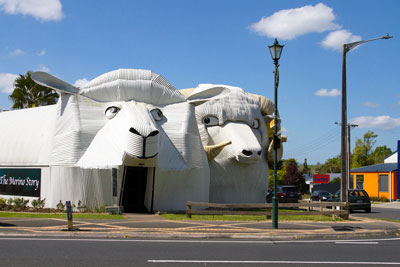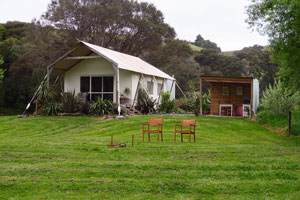Is Stonehenge Aotearoa better than the original?
Did you know there’s a Stonehenge in New Zealand? Yep! Tucked away in the countryside in the south of the North Island, you’ll find this spectacular Henge. Here’s what to expect when visiting Stonehenge Aotearoa.

Ah, Stonehenge. A Neolithic wonder of the ancient world, a tangible artifact of lost civilisations.
Millions flock to Salisbury to behold this Henge in the flesh. Yet, when you think about it, New Zealand is about as far away from the UK as you can get.
It’s a long way to travel for those with a keen interest in astronomy and our ancient past.
So, a solution of sorts was put in place last decade, when a replica of Stonehenge was erected in the Wairarapa countryside, not far from Wellington.
And if there is anything you absolutely must-see in the North Island of New Zealand, it’s Stonehenge Aotearoa.
Everything you need to know about Stonehenge Aotearoa

Wait… there’s a Stonehenge… in New Zealand?!
Yes, you read correctly.
Stonehenge Aotearoa was built over a period of two years, opening to the public in 2005.
Constructed primarily by members of The Phoenix Astronomical Society, it blends modern scientific research with ancient knowledge.
Unlike the original Stonehenge, some of its starlore is inspired by Polynesian and Maori traditions. So although it is built on a similar scale to the English version, it’s not an exact replica.
Here are some of the main features of Stonehenge Aotearoa.

The stones of Stonehenge Aotearoa
Stonehenge Aotearoa is around 30 metres long and 4 metres high and consists of 24 pillars, which are connected by lintels.
These are designed to form “doorways”, which act as important seasonal markers in the sky.
The purpose of Stonehenge is largely navigational and marking the rising and setting points of bright stars helps distinguish the calendar point of the year.

Another cool thing about this circle is the way it amplifies sounds. These acoustic properties are used to create special effects during ceremonies.
However, if you’re there for a visit, it’s quite fun to run around clapping your hands and enjoying the sound effect it generates.
It’s totally fine to do this as an adult. I can assure you of this.
Apparently some of the pillars act as “whispering-galleries” (where you can whisper something that is heard quite audibly in other parts of the structure). We did try to find a spot that worked, but largely failed in this endeavour.


The Sun Gate of Stonehenge Aotearoa
These two large pillars mark the entrance to the stone circle.
If you stand in the centre of the Henge during the spring equinox, you’ll see the sun rise directly in front of this gateway.
Hence the name, I suppose!

Stone markers
Speaking of equinoxes, there are six heel stones littered around New Zealand’s Stone Henge, ten metres beyond the stone circle.
They mark the rise and set points of the sun during the different solstices and equinoxes.

The obelisk of Stonehenge Aotearoa
This 5 metre-high obelisk is a nod to the beliefs of the Ancient Egyptians. It identifies the south celestial pole, which is the point around which the entire heavens seem to revolve.
Stonehenge Aotearoa has an advantage over the English Henge in this regard, as you can only see the south celestial pole from the Southern Hemisphere.
If you’re in Australia or New Zealand/Aotearoa, you can use the stars to locate the south celestial pole yourself, using the Southern Cross and its two pointer stars, α Centauri and β Centauri (Alpha Centauri and Beta Centauri) to map the axis.

Half an hour to either side of noon, the obelisk casts a shadow on the 10 metre long stoned tiles which runs along the meridian south of the structure. It’s intended to act as a giant clock and calendar. Let’s talk about it next.

The Astro Calendar or Analemma
This is pretty cool. If read correctly (something utterly beyond me) it identifies the current date, times of solstices and equinoxes and the time of the local noon.
It also dictates the ever changing length of a day and the correct star sign, for the time of the year.

So you could spend your life thinking you were a Leo, came to Stonehenge Aotearoa on your birthday, discover you’re actually a Virgo and realise you’ve been reading the wrong horoscope in the daily paper for your entire existence.
Upsetting.

Seven Sisters
Beyond the neat calendar are the Seven Sisters, which each stand for seven female figures.
They represent the Pleiades star cluster, which are located in the constellation of Taurus.
The rising of these stars marked the beginning of the year for Ancient Greeks, Egyptians and certain Asian cultures.

Interestingly, many cultures around the world have similar stories about the Pleiades star cluster, from Aboriginal Australians, to the Ancient Greeks.

What to expect at Stonehenge NZ
We arrived at Stonehenge NZ edition at around 11am, on a Friday morning. We were the only ones there, until a family with young kids showed up.
Entry into Stonehenge is $15 NZD. For this, you get to watch a quick video introduction into the “why” of this particular Stonehenge and then explore the area.
Guided tours are also available at an extra cost.

As I can’t go anywhere in New Zealand without taking at least a hundred photos of the place in question, we long outlasted the other family, who left after about twenty minutes.
We had the place to ourselves!
I had a lot of fun snapping Stonehenge NZ from all sorts of angles, aided largely by the dramatic clouds that filled the sky and the general beauty of the North Island’s landscape.

What can we learn from Stonehenge Aotearoa?
This Henge, like many others around the world demonstrates just how much there is to learn through the simple act of gazing at the night sky.
For our ancestors, the sky was everything.
Stars were used as navigational points. They marked out the seasons of the year. They told you what the weather was going to be, helped with food foraging and were the starting point for many legends and stories.
With many of us living in largely urban settings in these modern times, we don’t have the same access to the night sky that we once did, thanks to light pollution.

I’m going to get a bit deep and whimsical here, but I think this is really damaging.
I don’t know about you, but I love staring up at the night sky, looking for shooting stars, picking out the constellations I know and identifying planets.
Not only is the night sky a magnificent thing to behold, but it helps remind us of just how insignificant we really are. We’re all just star dust, after all.
You can be having the worst day and gaze up at the sky and realise it just doesn’t matter.
You are small, your problems probably are too and the universe is incomprehensibly big. When I’m world weary, it’s all I need to do to get excited thinking about what’s out there and just how much is left to discover.
Visiting Stonehenge Aotearoa was a nice reminder of just how simple life can be and the importance of standing still and taking in the world around you, from time to time.

Getting to Stonehenge Aotearoa
You could easily see Stonehenge Aotearoa during a day trip from Wellington, with it taking just under an hour and a half to make the journey.
The road is a bit twisty as it cuts through a national park. It’ll have you driving on the side of mountains, with beautiful views.
It’s also pretty impossible to get anywhere in New Zealand without a car, because that’s just how us southern countries roll. Stonehenge Aotearoa is no exception.
You can sort your hire car with Rentalcars.com. It’s simple to use and there’s a large selection of cars and providers to choose from.

What’s nearby?
Luckily, you can make it worth your while by throwing in some other cool sights.
Right across the road is a super creepy mansion known as the ‘Ahiaruhe Abandoned House’.
It’s become a local legend, with many being sure it has a tragic history and is haunted by the ghost of a woman killed within it many years ago.
Others believe it’s built on the remains of an old Maori village, with the ancestor’s spirits visiting at night.
Rather, the house belonged to a Doctor Forrest, who arrived in New Zealand from Scotland in 1911 and constructed the house in 1925 in Palmerston North.
It was owned by two more doctors who used it as their surgery until 1972, then as the setting for a law firm.
In 1986, it was moved to Ahiaruhe by a local farmer, who shifted it in two pieces. However, family difficulties led to the house being left abandoned.
It sits there now on this hill, open to all the elements and is probably the most photographed house in New Zealand… for good reason!

I thoroughly recommend checking out the nearby town of Martinborough.
It’s small, but has some really beautiful buildings and cute boutique stores to shop in.
It’s an ideal place to have lunch after visiting Stonehenge.
So there you have it. Stonehenge Aotearoa is probably one of New Zealand’s strangest attractions, in a country that has no shortage of odd things to see.
However, it’s certainly worth checking out, if you’re in the area. It may not be as ancient as the one in England, but the fact that you can go right in and explore it makes it worth the trip alone. Particularly as you pay almost twenty quid to ogle Salisbury’s Henge from a distance, while jostling for camera space.
Have you seen Stonehenge Aotearoa? Or visited the ah, original Stonehenge, unlike myself?
Want to read more content like this? Follow along on Facebook or sign up to the monthly newsletter!





